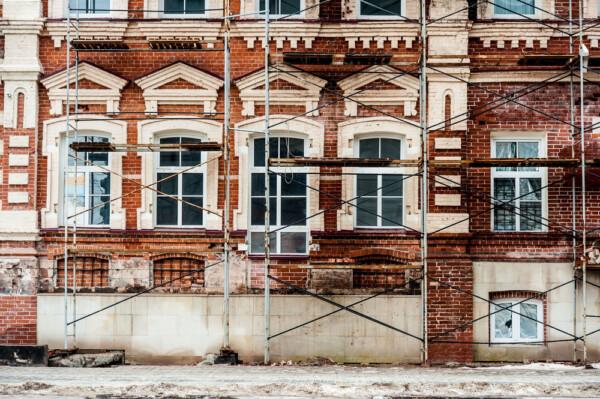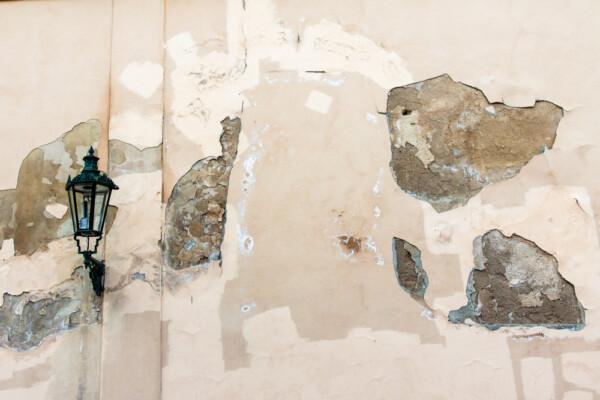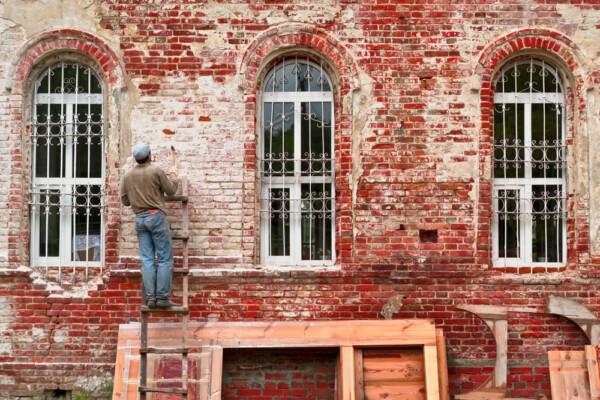Restoring Building From Water Damage
Water damage to a building foundation is common in areas like Minnesota that often receive a lot of precipitation. Heavy rains can deposit excessive moisture in the soil. This causes the dirt around the foundation to expand and place pressure on the sides of the foundation, resulting in the foundation developing cracks. Water can then infiltrate through the cracks and cause even more damage.
Water damage also occurs from broken pipes and leaking swimming pools. Water infiltration causes wooden structures to rot and the soil that supports the building to erode and shift enough for the foundation to collapse. All of this can lead to an overall weakening of the foundation and, if left uncorrected, possible catastrophic collapse. If you need concrete repair in Minneapolis, be sure to pick a contractor who has the experience to perform the repair professionally.
Because the early signs of water damage can be difficult to spot unless you know what to look for, you may not even realize you have a problem until significant damage has occurred. However, water damage can be prevented when caught early and properly addressed. To help you know what to look for, here are six major signs of foundation water damage:

1) Foundation Cracks
Cracks in the foundation are an obvious sign of water damage but can be very easy for the untrained eye to miss. Cracks can occur on either the outside or inside of the foundation wall. While small cracks may not be a significant concern, they are often indicative of a larger problem. This is especially true of horizontal cracks, and these should be examined by a foundation-repair professional. Commercial buildings should be inspected by a commercial concrete repair professional.
2) Sinking
While some settling is normal, especially on newer buildings, excessive settling is often a sign of a foundation problem. If one side of the building shows signs of sinking, the foundation has most likely become unstable. This is also the result of soil erosion under the foundation caused by long-term water runoff. One side of the building may settle faster than the other. This is called “differential movement” and is caused by heavier load-bearing walls causing more downward pressure than walls that do not bear a load. This can happen on either a basement or a slab foundation.
3) Walls and Floors
While everything may appear fine on the exterior, foundation water damage often happens on the inside of the building. Warped or tilting walls and/or uneven floors are often a sign of a failing foundation. While some settling is normal, walls and floors that are seriously askew are a sign of a severe problem. This is often the result of water damage that is not readily noticeable and is caused by soil erosion around or under the foundation. This can lead to a dangerous situation if it affects a load-bearing wall, resulting in the building partially collapsing.

4) Gaps and Spaces
Gaps can occur around framings, such as door and window frames. This occurs as the result of the uneven settling of the foundation. Gaps around door and window frames are most often vertically oriented. While these gaps typically start small, often less than a 1/4 inch, they can expand rapidly.
5) Doors, Windows, and Cabinets
Doors and windows that stick or won’t open or close, don’t latch properly, or double doors that will not correctly align are all signs of possible foundation damage. Door and window frames may also be visibly crooked. Counters and cabinets may separate or pull away from the wall. It may look like the cabinets have moved away from the wall just a bit at first, but they then suddenly pull further out. If cabinets have pulled away from the wall 1/2 inch or more, you have a severe problem.
6) Damp Crawl Space or Basement Flooding
This is one of the most obvious signs of foundation water damage. Moisture in the crawl space or standing water in the basement comes from a leaking interior pipe or water intruding from outside the building. If this problem has been going on for a while, then the chance of foundation damage is already high. Either way, the source of infiltration must be addressed, or foundation damage is a certainty. Damp crawl spaces and basements can often omit a musty odor that may be noticeable inside the building. If you need Waterproofing in Minneapolis, be sure to use a masonry contractor who specializes in waterproofing basements.
Preventing Water Damage
Areas that receive more precipitation are the most prone to flooding and water damage. However, there are some simple things you can do to prevent water damage to your foundation:
- Be watchful for any signs of water intrusion. Inspect your foundation regularly and take note of any changes. It is important to note that just a small 1/2-inch anomaly can quickly become a very large problem.
- Maintain gutters, so water properly drains away from the building.
- Look for areas that collect water and employ methods to drain water away from the foundation.
- Maintain water pipes to prevent bursting.

Epic Masonry | Commercial Concrete Repair
Once a foundation has become compromised, it is imperative to act as soon as possible to prevent further damage. If you see any signs of foundation water damage, you should have the building professionally evaluated. If you need concrete repair in Minneapolis or waterproofing in Minneapolis, Epic Masonry Restoration provides a wide range of masonry services and commercial concrete repair. Visit Epic Masonry online at epicmasonryrestoration.com or call them at 612-353-4646.
